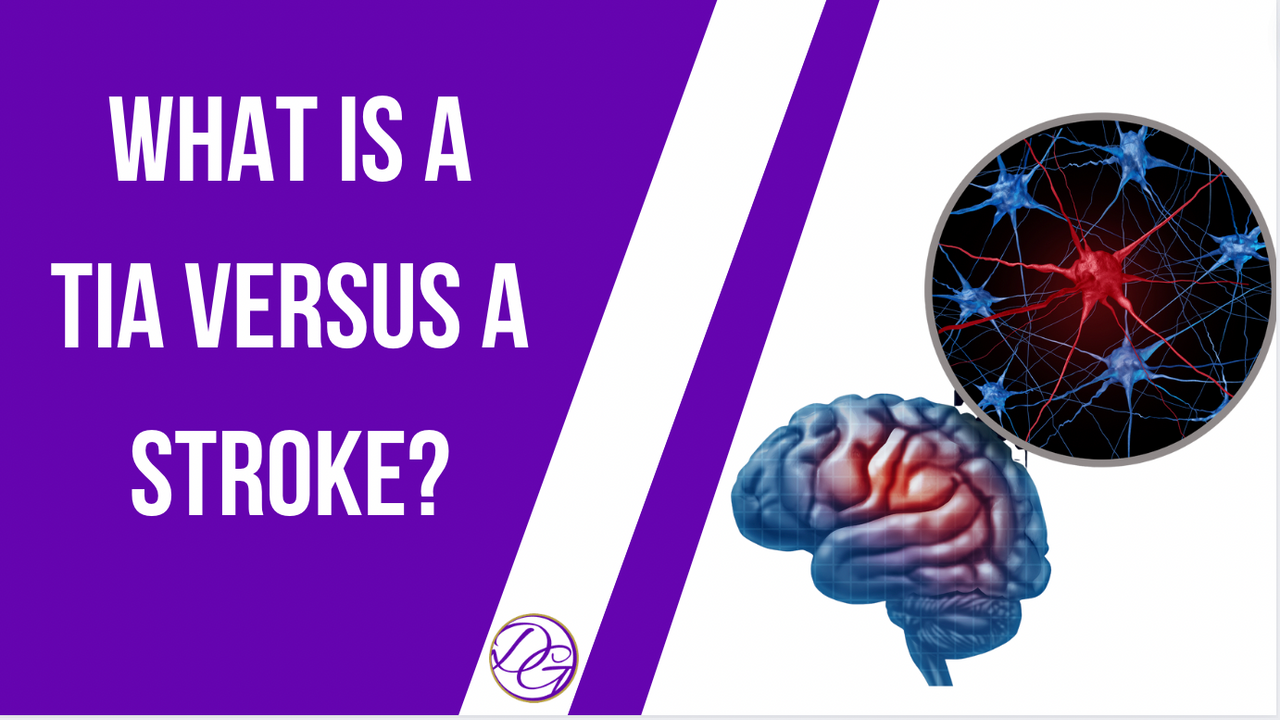What Is A TIA Versus A Stroke?

A Lot of the senior population goes through life without communicating the different things they are feeling or symptoms they are experiencing. If they have a day when they are not feeling good, most times they will lie down hoping to feel better when they get back up. Sometimes they do feel better, but not communicating what they were feeling could expedite a serious occurrence in the future. With that being said I would like to share with you some things everyone should know about strokes. There is nothing worse than hearing a diagnosis from a doctor, that you have no idea what exactly it is and how it will affect your loved one.
In medical terms, this diagnosis is called a Cerebral Vascular Accident abbreviated by CVA. The other term used is a Transient Ischemic Attack abbreviated with TIA, commonly known as a mini stroke. TIA’s can be a precursor of a much bigger problem and result in a CVA. When someone has a TIA it is a warning sign for immediate intervention. These mini strokes usually only last a few minutes to a few hours with temporary periods of symptoms that are similar to a stroke, but don’t cause permanent damage.
Symptoms of TIA’s include sudden onset of weakness or numbness on one side of the body, slurred or garbled speech, blindness or blurred vision, and dizziness or loss of balance. TIA very commonly occurs hours or days before an actual stroke. Seeking medical attention for evaluation and treatment will help to prevent a serious stroke. The underlying cause of a TIA is a buildup of plaque in an artery that supplies blood to the brain. If there is decreased blood flow, areas in the arteries form clots, and the movement of these clots when they travel to the brain is what causes a CVA. There are certain risk factors that you can’t control. The risk factors that you can control include: high blood pressure, keeping your cholesterol within normal limits, managing your diabetes, not smoking, and decreasing your intake of alcohol.
With modern medicine, recognizing the symptoms and getting to a hospital can help fight the effects of strokes. We now have medicines to dissolve clots if discovered, but it has to be administered within 3-4 hours after your symptoms started. Sometimes a surgical removal can be completed by placing a catheter through the groin and inserting a stent into the carotid artery. This procedure also has to be completed within 6 hours of the first symptom. If you recognize the signs and symptoms of strokes when they first start you must call 911 immediately. A stroke is a medical emergency and timing is very important.
Here is an easy way to remember how to recognize a stroke - F.A.S.T
- Face drooping
- Arm weakness
- Speech difficulties
- Time to call 911
Once you are at the hospital you are at the right place. Tests will begin immediately to let the doctors know exactly what kind of stroke you are experiencing so they know the very best treatment for you. The tests they use to diagnose your symptoms are: CAT scans, MRI’s, bloodwork, and ultrasounds. After having any kind of stroke you will definitely need to make lifestyle changes to decrease your risks for disability and/or death from future strokes.


